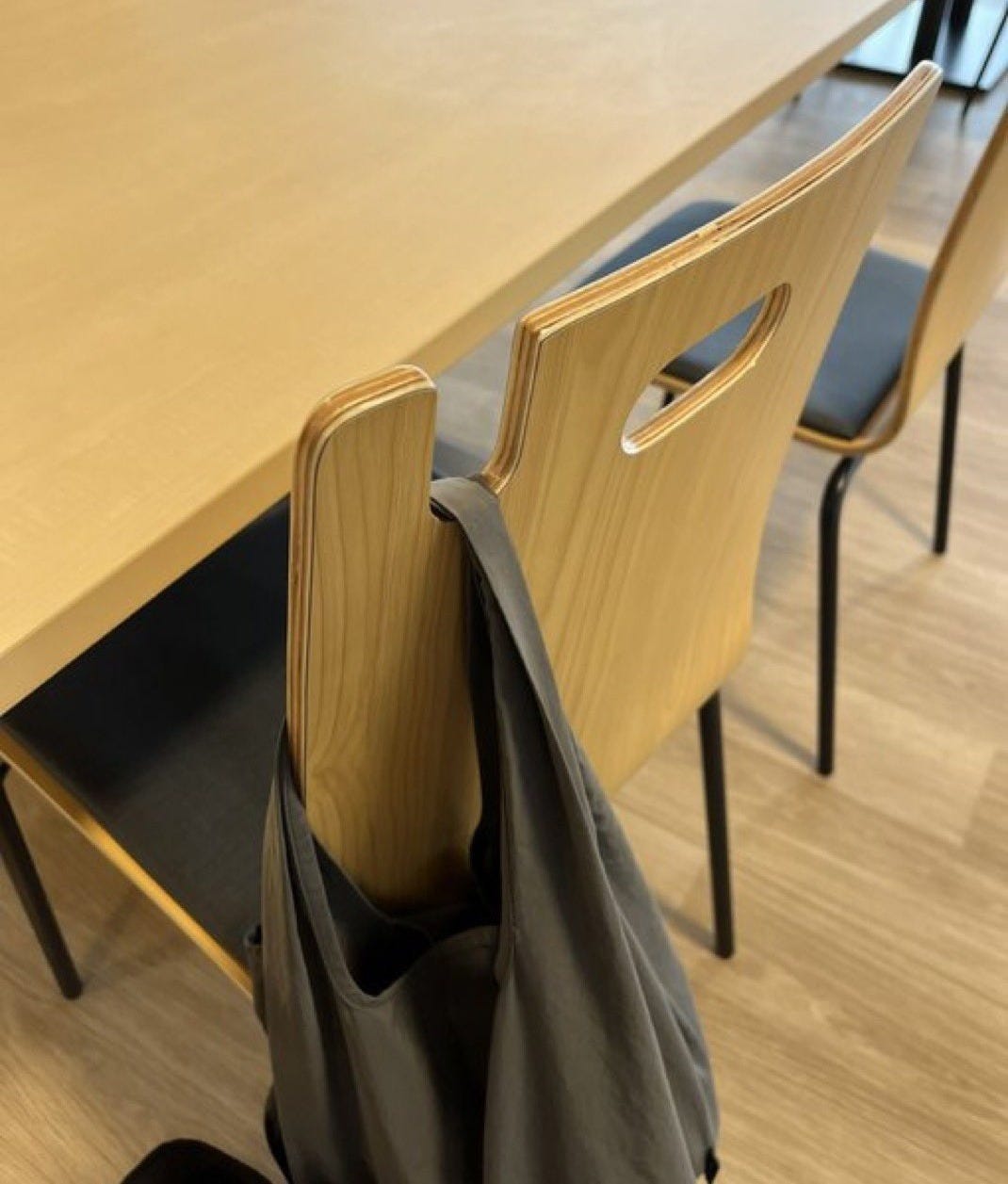The Hole in the Chair That Tells the Truth About Innovation
Walk into any cafeteria, office, or classroom, and you’ll spot a small detail that says a lot about innovation: the horizontal cutout at the top of a wooden chair. It was designed so staff could move chairs more easily.
But look closer. One bag is on the floor. Another is sliding off the backrest after two minutes of sitting and movement. A third is occupying the next chair. Hmm. What if there were another cutout—vertical, placed at the edge—not to move chairs, but to hang a bag?
No one planned that use case. No one ran a “chair-to-bag ergonomics” study. Yet it happens everywhere—a simple adaptation (an anomaly) solving a real un(der)served problem.
And there it is—an improvised solution to a real struggle. It’s not about the chair. It’s about what people are trying to get done.
That’s the essence of Jobs to Be Done (JTBD). Innovation doesn’t come from refining the object itself. It comes from noticing what people actually do with it—and how they bend design to fit their needs.
The trap of inside-out innovation
Most companies start with the product. They ask, “How do we make the chair stronger, lighter, cheaper, or more stylish?” That’s inside-out thinking: you look at your object, polish its edges, and call it innovation.
But if you only improve the chair itself, you might miss the bigger opportunity. The user doesn’t wake up in the morning wanting a chair. They wake up wanting to sit comfortably, store their things, socialize, focus, or rest. The chair is just a means to an end.
Stuck with this topic and need hands-on help?
You can book me for workshops, keynotes, or one-on-one sparring – Let’s talk.
The bag on the chair tells us that the user’s job was not just “have a place to sit.” It was also “keep my stuff close without cluttering the floor.” If you don’t see that job, you’ll keep building slightly better chairs, while someone else invents the solution people didn’t know they were waiting for.
Observing struggles is the real R&D
The magic lies in struggles. If you want to innovate, don’t ask people what they want. Watch what they do when the current solution falls short.
Here are some struggles with chairs that point to hidden jobs:
Keep reading with a 7-day free trial
Subscribe to INNOVATION& by Yetvart Artinyan to keep reading this post and get 7 days of free access to the full post archives.




